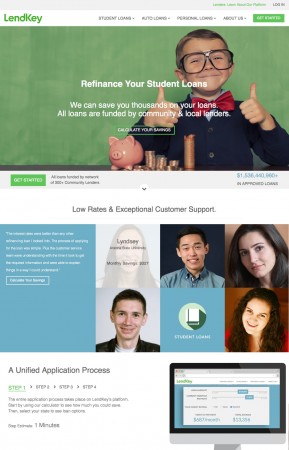
 Sliders are a widely used design feature on website homepages for businesses of all kinds. Part of their popularity is because organizations have a hard time making a decision on a single message to share with new visitors, lack the capability of personalization, lack a data-driven testing process, and they cede control to a political decision-making process. And while sliding banners may appear to be a lively and vibrant design feature, the reality is they don’t support your conversion objectives and they aren’t a strategic design choice.
Sliders are a widely used design feature on website homepages for businesses of all kinds. Part of their popularity is because organizations have a hard time making a decision on a single message to share with new visitors, lack the capability of personalization, lack a data-driven testing process, and they cede control to a political decision-making process. And while sliding banners may appear to be a lively and vibrant design feature, the reality is they don’t support your conversion objectives and they aren’t a strategic design choice.
Homepage sliding banners are not a website design best practice.
Here’s why homepage banner sliders don't work:
1. They don’t convert. It’s been proven time and time again that sliders have a negative impact on your conversion rates. Visitors may ignore sliders or feel annoyed by them, but either way they don’t click on them.
2. They have a negative impact on SEO. Because sliders require devices to pull up images through Javascript, the load time of your entire page will suffer. Users tend to click away from slow loading sites, which leads to high bounce rates, which leads to a negative impact on your ranking.
3. They aren’t mobile-friendly. When the size of your slider is reduced to fit a mobile device’s screen, the messages and images it contains become extremely difficult to view. Plus, it takes a very long time to pull up slider images using a data plan, which means mobile visitors will likely click away in search of a site that loads more quickly.
3. They’re difficult to time correctly. In some cases, sliders move too quickly and can’t be read fast enough. In others, they move too slowly and users think there’s only one static image, which means they don’t wait to interact with the subsequent messages. In either case, visitors aren’t able to take the intended action and your conversion suffers.
Now that you know the four reasons website homepages are bad for business, you’re likely wondering about the alternative. Rather than using outdated and ineffective sliders for your homepage, we recommend using “The Hero Layout” instead.
The hero layout is used by sites that are known for their high conversion rates, such as Spotify, Square, and Dropbox. It involves using a single content section with one clear and easy-to-understand goal that comprises the entire first fold of your website homepage. It takes up the entire screen, but it feels simple and is one of the highest-converting layout formats that are commonly used by small and large organizations.
 Here’s why you should try a hero layout instead of a homepage sliding banner:
Here’s why you should try a hero layout instead of a homepage sliding banner:
1. Optimal loading across devices. The hero layout is quick to load because, unlike sliders, there aren’t any moving parts to synchronize and you don’t have to pull excessive amounts of Javascript. In addition, the simplicity of this design ensures uniformity across a wide variety of browsers and devices.
2. Better for SEO. Because the hero layout is quick to load, you’re less likely to experience high bounce rates from inpatient visitors. As search engines prioritize low bounce rates, your ranking will likely increase.
3. Increased design flexibility. With sliders, you have one design option. If it doesn’t convert, you have to invest in an entirely new alternative. The sliding effect reduces the kind of content you can employ within this precious space. Conversely, the hero layout can be easily changed to test variations for conversions. For example, you can add a new background color, content box, call-to-action button, or headline to see which options your visitors respond to the most.
by Jonathan Franchell, CEO of Ironpaper - For more tips and hacks: Need to remove a new line after h1 tags? Both web designers and SEO practitioners need to employ headline tags: H1, H2, H3 in several ways to improve web page structure and tag...

The Crowded Arena of the IT Marketplace Updated December 2024 The Information Technology (IT) landscape is experiencing rapid growth and intensifying competition. IT spending is projected to reach nearly 5.1 trillion U.S. dollars in 2024, a...

The marketing industry is transforming significantly due to generative AI and increasing market complexity. Gartner's prediction of a 25% decline in traditional search traffic suggests that the era of search engines is dying. AI tools, particularly...

Updated December, 2024 The field of digital marketing is evolving rapidly in response to new technology and changing buyer expectations. To help career-minded marketers, we’ve rounded up the top 10 skills needed to succeed in the field. These are...
